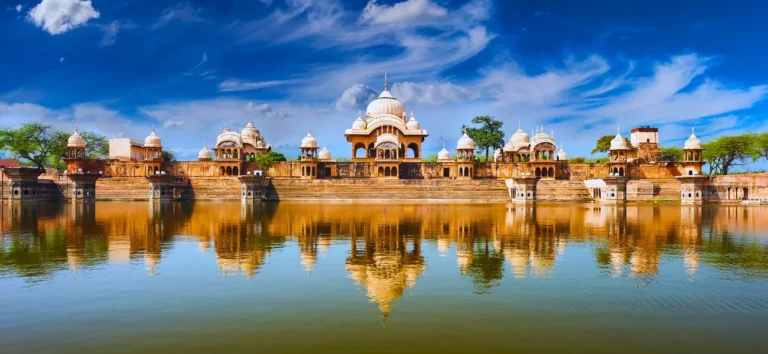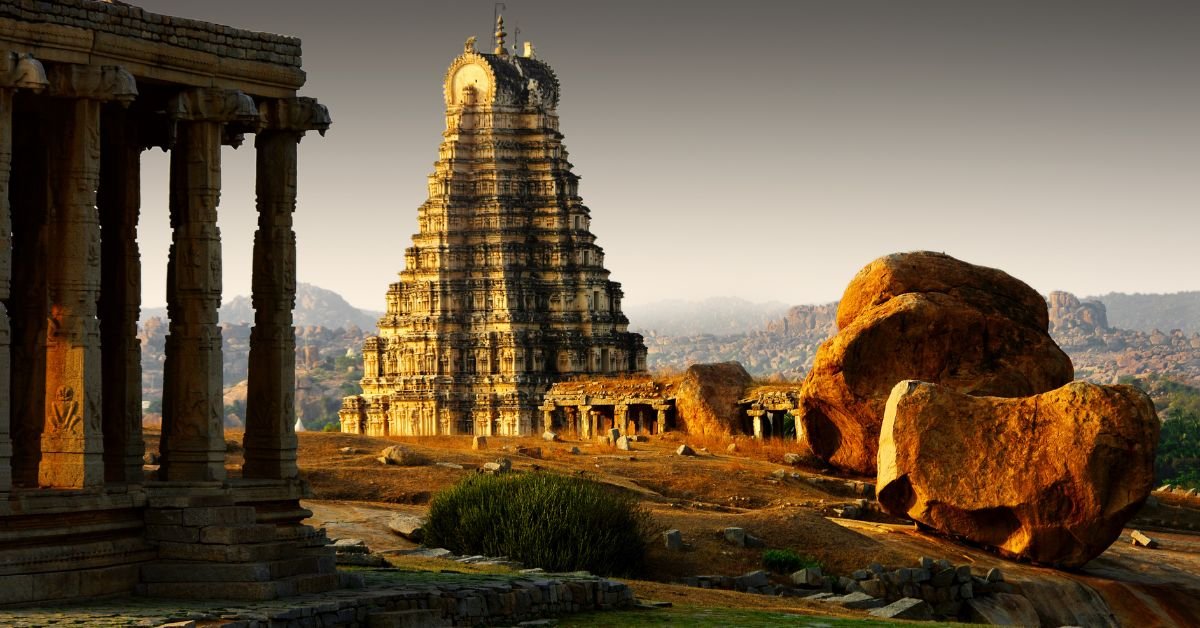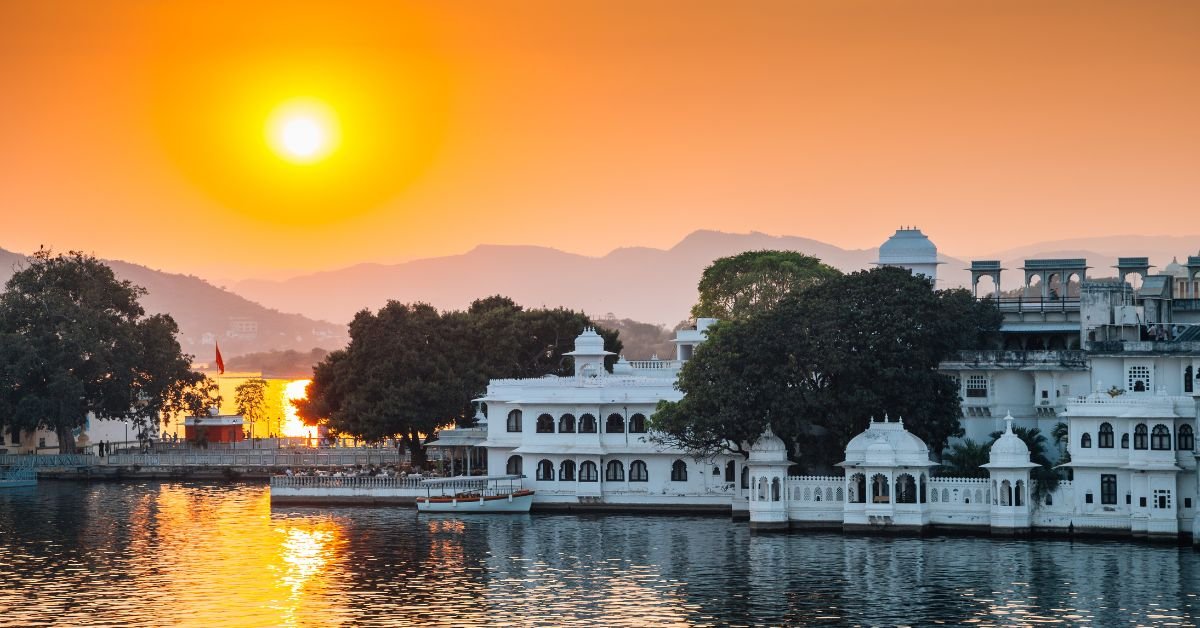Picture stepping into Agra, where the magnificent Taj Mahal stands like a dream carved in marble. This breathtaking wonder isn’t just a building – it’s a love story written in stone. Imagine a heartbroken emperor, Shah Jahan, who loved his wife Mumtaz so deeply that he created this masterpiece to keep her memory alive forever.
As you walk through the grand entrance, you’ll feel your heart skip a beat at the sight of its stunning white domes reaching toward the sky. Every delicate carving and pattern tells a story of devotion. The peaceful gardens and mirror-like pools create a sense of calm that touches your soul. For hundreds of years, the Taj Mahal has moved visitors to tears with its beauty.
It’s more than just a famous landmark – it’s a place where you can feel the power of love and human creativity in every stone.
Table of Contents
ToggleHistory and Significance of the Taj Mahal
The origins of the Taj Mahal Agra trace back to the deep love Emperor Shah Jahan had for his wife, Mumtaz Mahal. This monument is more than a building—it’s a tribute to an eternal bond that defied time.
- A Love to Remember – The emperor’s grief for Mumtaz led to the creation of this breathtaking mausoleum.
- Years of Dedication – Over 20,000 artisans, architects, and laborers worked passionately for nearly two decades to bring Shah Jahan’s vision to life.
- A Cultural Icon – Blending Indian, Persian, and Islamic elements, the Taj Mahal Agra represents the rich legacy of Mughal artistry.
- A Symbol of Devotion – Known worldwide as the “Monument of Love,” the Taj is a living symbol of affection, loss, and remembrance.
- UNESCO World Heritage – Recognized globally, the Taj Mahal remains one of India’s most cherished historical gems.
Architecture and Design of the Taj Mahal
The architecture of the Taj Mahal Agra is a stunning blend of symmetry, precision, and exquisite craftsmanship. The monument’s design is a perfect balance between elegance and grandeur, highlighting Mughal architecture’s peak.
- Pure White Marble – Crafted from white marble from Makrana, Rajasthan. The Taj reflects light beautifully, giving it an ethereal glow at different times of day.
- Symmetry and Balance – The Taj Mahal Agra exhibits flawless symmetry, with each side mirroring the other, symbolizing harmony and balance.
- Intricate Inlay Work – The walls and arches are adorned with delicate inlays of semi-precious stones, such as lapis lazuli, jade, and turquoise.
- Majestic Dome – The central dome, with its perfect curves and large scale, stands at over 70 feet tall, capturing attention from all angles.
- Four Minarets – The four slender minarets frame the structure and lean slightly outward to protect the main tomb during an earthquake.
The Love Story Behind the Taj Mahal
The heart of the Taj Mahal Agra is the love story it embodies. Shah Jahan’s love for Mumtaz Mahal transformed this white marble structure into a symbol of undying affection, cherished by all who visit.
- A Tragic Farewell – Mumtaz Mahal’s passing left Shah Jahan devastated, leading him to create a tribute that would immortalize her memory.
- A Promise of Forever – On her deathbed, Mumtaz asked Shah Jahan to honor their love. The Taj Mahal Agra is his ultimate pledge.
- The Eternal Resting Place – The tombs of Shah Jahan and Mumtaz Mahal lie side by side, a beautiful representation of their eternal union.
- An Inspiring Tale – The Taj Mahal Agra isn’t just architecture; it’s a love story, resonating with anyone who has ever loved deeply.
- A Gift to the World – Shah Jahan’s vision of love gives us a gift of wonder. Drawing visitors who feel its timeless message in every marble stone.

Visiting the Taj Mahal: Tips and Practical Information
The Taj Mahal Agra is a popular attraction, and planning your visit carefully ensures a memorable experience. Here are some practical tips for a smooth visit:
- Best Time to Visit – Sunrise or sunset is ideal to witness the Taj Mahal Agra at its most beautiful, with the marble reflecting softer shades.
- Entry Fee – Foreign tourists have a different entry fee than Indian nationals. With options for add-ons like access to the main mausoleum.
- Avoid Crowds – Visiting early in the morning or late in the evening can help avoid large crowds.
- Restricted Items – Food, large bags, and certain electronics are not allowed inside, so pack light.
- Guided Tours – Hire a local guide for a deeper insight into the Taj Mahal Agra’s history, architecture, and stories.
Exploring the Gardens and Surrounding Areas of the Taj Mahal
The Taj Mahal Agra is not just its central tomb—the lush gardens and serene spaces surrounding it create an oasis of tranquility. Ideal for immersing oneself in the monument’s beauty.
- Charbagh Gardens – Modeled after Persian gardens, these gardens reflect paradise, symbolizing the heavens.
- Reflecting Pool – The water mirror provides an iconic reflection of the Taj Mahal, a mesmerizing sight to behold.
- Pathways and Fountains – The pathways lined with fountains lead visitors gracefully toward the central monument.
- Cypress and Fruit Trees – Cypress trees signify eternity, while fruit-bearing trees hint at life and regeneration.
- Views from Mehtab Bagh – Across the river, Mehtab Bagh offers a unique perspective, with sunset views that add an extra layer of magic.
Capturing the Beauty of the Taj Mahal: Photography Tips
Photographing the Taj Mahal Agra is a must for visitors, with its iconic white marble structure providing endless opportunities for beautiful shots.
- Golden Hours – Early morning and evening provide the best light for photography.
- Reflections – Use the reflecting pools to capture unique, mirror-like images of the Taj Mahal.
- Vary Your Angles – Explore different perspectives, from close-up details to wide shots that capture the entire structure.
- Avoid Crowds – Arrive early for clearer views and fewer people in the background.
- Look for Symmetry – The Taj Mahal Agra is renowned for its symmetry, so use this to frame your shots beautifully.
Lesser-known Facts and Myths about the Taj Mahal
The Taj Mahal Agra is surrounded by fascinating myths and little-known facts that add intrigue to its story.
- Changing Colors – The marble of the Taj Mahal Agra changes colors depending on the time of day. Symbolizing different moods of Mumtaz.
- Myth of Black Taj Mahal – Legend suggests Shah Jahan planned a black Taj Mahal across the river for himself, though no evidence confirms this.
- Architectural Secrets – The four minarets lean outward, a design feature meant to protect the main tomb during earthquakes.
- Calligraphy Details – Arabic calligraphy on the walls of the Taj Mahal Agra increases in size as it rises. Creating a uniform appearance from below.
- Hidden Passageways – Some believe that hidden passages exist beneath the Taj, though they remain unexplored.
Preservation and Conservation Efforts for the Taj Mahal
Preserving the beauty of the Taj Mahal Agra is vital to keeping its legacy alive for future generations. Especially as environmental and visitor impacts take their toll.
- Controlling Pollution – Strict measures have been put in place to monitor pollution around the Taj Mahal Agra to prevent marble discoloration.
- Marble Cleaning – A mud-pack treatment helps to restore the white marble to its original splendor.
- Visitor Management – Regulating the number of visitors and limiting access to certain areas protects the monument’s delicate structure.
- Landscaping Efforts – The gardens are meticulously maintained, enhancing the beauty of the Taj Mahal Agra.
- Global and Local Collaboration – UNESCO, along with local bodies, works tirelessly to uphold the Taj Mahal’s splendor.
Conclusion: The Enduring Allure of the Taj Mahal
The magic of the Taj Mahal isn’t just in its perfect marble walls or stunning gardens – it’s in the way it makes you feel. Standing before this wonder, you can almost hear the whispers of a love story that refused to die. Every morning, as the sun paints its white domes in golden light. The Taj seems to come alive with emotions that have touched millions of hearts over centuries.
This isn’t just another tourist spot – it’s where love and art dance together in perfect harmony. When you visit, you’ll understand why people say some places have a soul. Let us take you on a journey that’s more than just sightseeing – it’s about experiencing a piece of history that still beats with the warmth of human emotion. Here, in the heart of Agra, you’ll find a story of love so powerful it turned marble into poetry.
Book your tour packages with us for a seamless experience and make memories for lifetime.

















